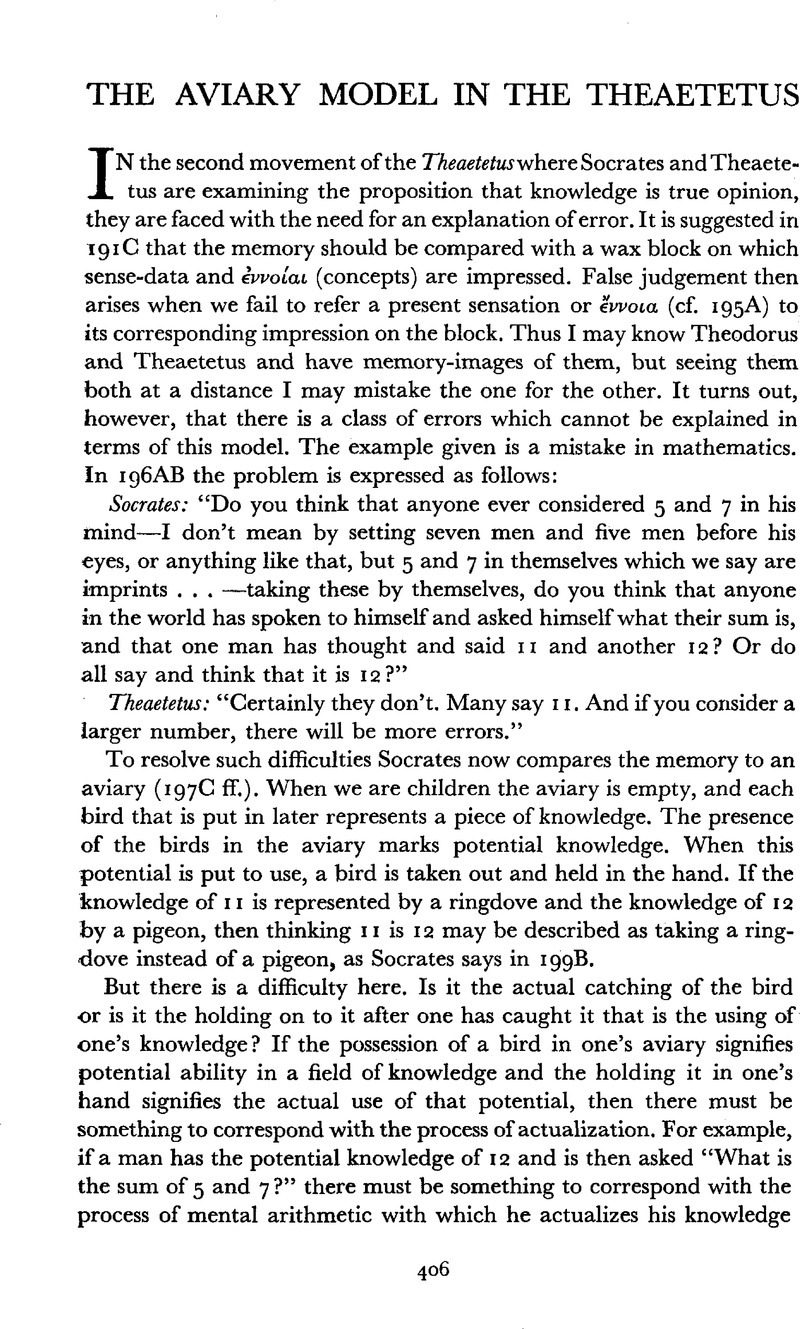No CrossRef data available.
Published online by Cambridge University Press: 09 June 2010

1 For an understanding of what Plato means by “;knowledge of 12”, see R. Hackforth, “Notes on Plato's Theaetetus”, Mnemosyne s. 4, 10 (1957) 138.
2 We cannot be certain what Socrates would have said about judgements like 7 + 5 = 18 (let alone 9 × 9 = 64). Knowledge of 12 and knowledge of 18 can hardly be said to be as similar as ringdoves and pigeons. Yet a hasty and careless man might conceivably catch the knowledge of 18 when looking for the knowledge of 12. Perhaps Socrates would have supposed him confidently stretching out to take a bird while keeping his eyes shut. We all know the attitude of the man who insists: “I could do it blindfolded”.